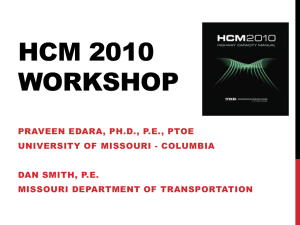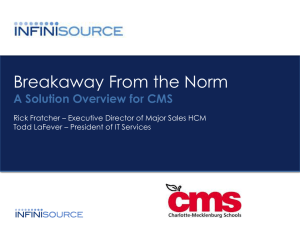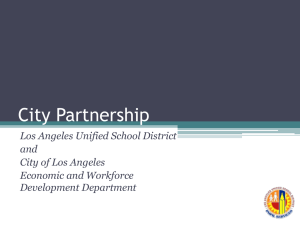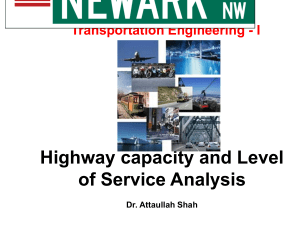Traffic Analysis Toolbox &
advertisement
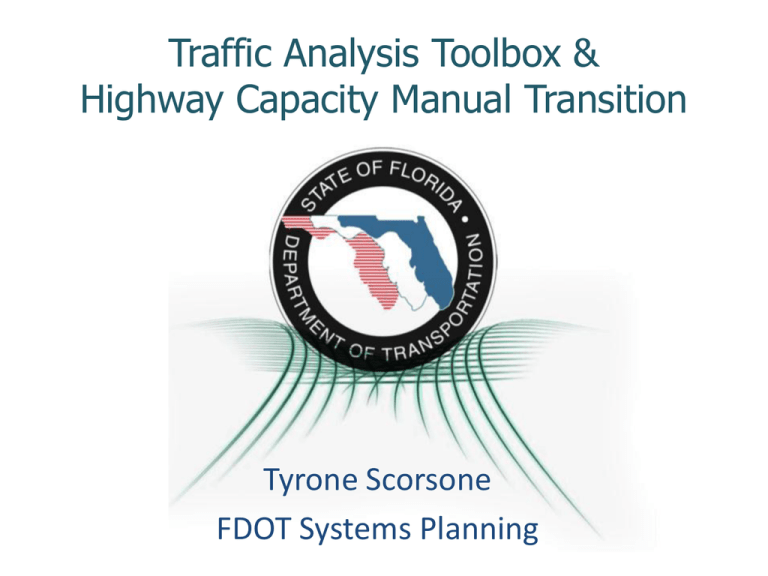
Traffic Analysis Toolbox & Highway Capacity Manual Transition Tyrone Scorsone FDOT Systems Planning Transportation Research Board’s (TRB) Highway Capacity Manual (HCM) 2 HCM Quality/Level of Service (QLOS) Handbook Facility Level Analysis Detailed Point & Segment Analysis 3 Advantages of Analytical/Deterministic Tools Quickly predict impacts Widely accepted 4 LOS Planning/Preliminary Engineering Tools Preliminary Engineering Software Generalized Planning Tables http://www.dot.state.fl.us/planning/systems/sm/los/default.htm 5 6 Capacity/LOS Analyses and Evaluation Tools (Microsimulation) CORSIM Potential Accuracy TRANSYT-7F HCM | TCQSM BLOS | PLOS ARTPLAN FREEPLAN HIGHPLAN (Simple Operational Analysis) (Preliminary Engineering) Generalized Tables (Generalized Planning) Effort/Complexity 7 Exporting Data to Highway Capacity Software (HCS) 8 Planning Uses of LOS Techniques Initial problem identification Delay calculation Future year analysis Conducting alternatives analyses Assessing development impacts 9 Primary Uses of LOS Techniques Site Impact Future Year Analysis Project Development Other 10 Transportation Impact Handbook FDOTTransportationImpactHandbook.com 11 Screen for impacts of Development 12 Screen for impacts of Development Screen for impacts of Development 13 The Users Perspective 14 A/B Automobile LOS C/D E/F 15 A/B Modal LOS Bicycle C/D E/F 16 A/B Modal LOS Pedestrian C/D E/F 17 A/B >4 buses/hour Modal LOS Bus C/D 2 to 4 buses/hour E/F < 1 bus/hour 18 Capacity/LOS Analyses and Evaluation Tools (Microsimulation) CORSIM Potential Accuracy TRANSYT-7F HCM | TCQSM BLOS | PLOS ARTPLAN FREEPLAN HIGHPLAN (Simple Operational Analysis) (Preliminary Engineering) Generalized Tables (Generalized Planning) Effort/Complexity 19 Generalized Service Volume Tables… …provide estimates of maximum service volumes for various types of Florida road facilities …represent average roadway conditions for the state, not representative of any single roadway …allow analysts to quickly and easily compare volumes to estimate LOS. 20 Types of Tables (mostly used in planning) Daily Two-Way Urbanized Transitioning/Urban Rural (However, all are based on a peak hour peak direction analysis) Peak Hour Two-Way Urbanized Transitioning/Urban Rural Peak Hour Peak Direction Urbanized Transitioning/Urban Rural 21 Service Volume Tables In General 22 Potential Applications Quick estimate of LOS Is there a problem? System adequacy Travel demand models Roadway quick sizing 23 Table Exercise 1 LOS=C 95,400 LOS=E 122,700 • Determine the maximum service volumes – In terms of annual average daily traffic (AADT) volume – In an urbanized area – For a freeway with: • 6 lanes 24 Capacity/LOS Analyses and Evaluation Tools (Microsimulation) CORSIM Potential Accuracy TRANSYT-7F HCM | TCQSM BLOS | PLOS ARTPLAN FREEPLAN HIGHPLAN (Simple Operational Analysis) (Preliminary Engineering) Generalized Tables (Generalized Planning) Effort/Complexity 25 Demonstration Of LOSPLAN 26 LOS Planning/Preliminary Engineering Tools will be updated in 2012 2012 www.dot.state.fl.us/planning/systems/sm/los/ 27 Highway Capacity Manual Transition 28 Presentation Purposes Highway Capacity Manual Past, Present & Future Adopting the 2010 HCM What Has To Change Implementing the 2010 HCM How Long Will It Take 29 HCM/LOS History 1985: Refined LOS Direction 1965: LOS Concept 2010: Integrated Multimodal Perspective 30 2010 Highway Capacity Manual 2010 HCM Significant changes When to phase in? To be published this month New arterial performance measure Receiving implementation inquiries Replaces 2000 HCM Multimodal 31 2010 HCM Implementation Issues Why Not Transition Immediately? LOS “Standard K” Factors Rule Update Technical Impacts Rules Arterials Policies Freeways Procedures Consistency Need for State-wide Consistent Response to Phasing in of 2010 HCM 32 What is “Standard K”? Rather than having “K” be a traffic variable, make it a fixed parameter based on: Area Type Facility Type “K” Factor: Ratio of peak hour traffic to AADT 33 Importance of LOS Standards and K Factor Promotes Better Transportation • Time and cost savings to FDOT • Update to latest research Consistency: Planning Through Design • Within Department • Throughout development community • Simple to understand Sensible Approach • Positive for Development • Supportive of Growth Management 34 2 Arterial Classes 1 2 35 Implementation Schedule July ‘11 January ‘12 July ‘12 December ‘12 Refine HCM Analyses Implement “Standard K” Factors Update LOS Standards Update Procedures & Guidelines Coordination, Transition & Adoption 36 QUESTIONS? 37 FDOT’s transition plan to the 2010 HCM represents a logical comprehensive process which includes evaluating a few key 2010 HCM changes, possibly implementing technical changes to current practice, possibly updating its level of service standards, and updating its own HCM-based software. FDOT recognizes it cannot require this transition period be applied to outside entities; however, it requests those entities accept this relatively short transition period. 38


